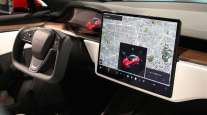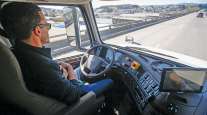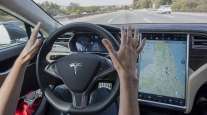Russian Self-Driving Car Takes on Snow and Sub-Zero Conditions

Apple Inc.’s engineers are used to the balmy conditions of California. No such luck for those at Yandex NV, Russia’s largest internet company, who posted footage of their self-driving car on public roads in icy conditions after a recent snowstorm.
Yandex.Taxi’s autonomous Toyota Prius navigated several kilometers in central Moscow during light rain and -6 Celsius temperatures, according to a company blog post Feb. 16.
The Russian company’s ultimate goal is to achieve functionality such that no steering wheel, brake pedal or human is required in order for a car to reach a destination.
RELATED: Wintry weather illustrates one challenge facing vehicle automation
RELATED: If you hate driving in the snow, a robot can now do it or you
Yandex.Taxi’s driveless car uses cameras and Lidar, the sensing method that uses laser pulses to measure distances. The vehicle also uses GPS, online maps and computer-vision technology to lead its movement, according to Yandex.
Snow can shroud cameras and cover the lane lines a driverless car needs to detect to remain on course. Lidar also is limited because the light pulses it emits reflect off snowflakes, potentially confusing a curtain of falling snow with something to avoid and causing the vehicle to hit the brakes.
Algorithms managing the car’s movements should adapt to the conditions, Yandex said. Once enough data from snowy roads are collected — Yandex has been collecting such data since December — the system learns to adjust its driving pattern, according to the company.




